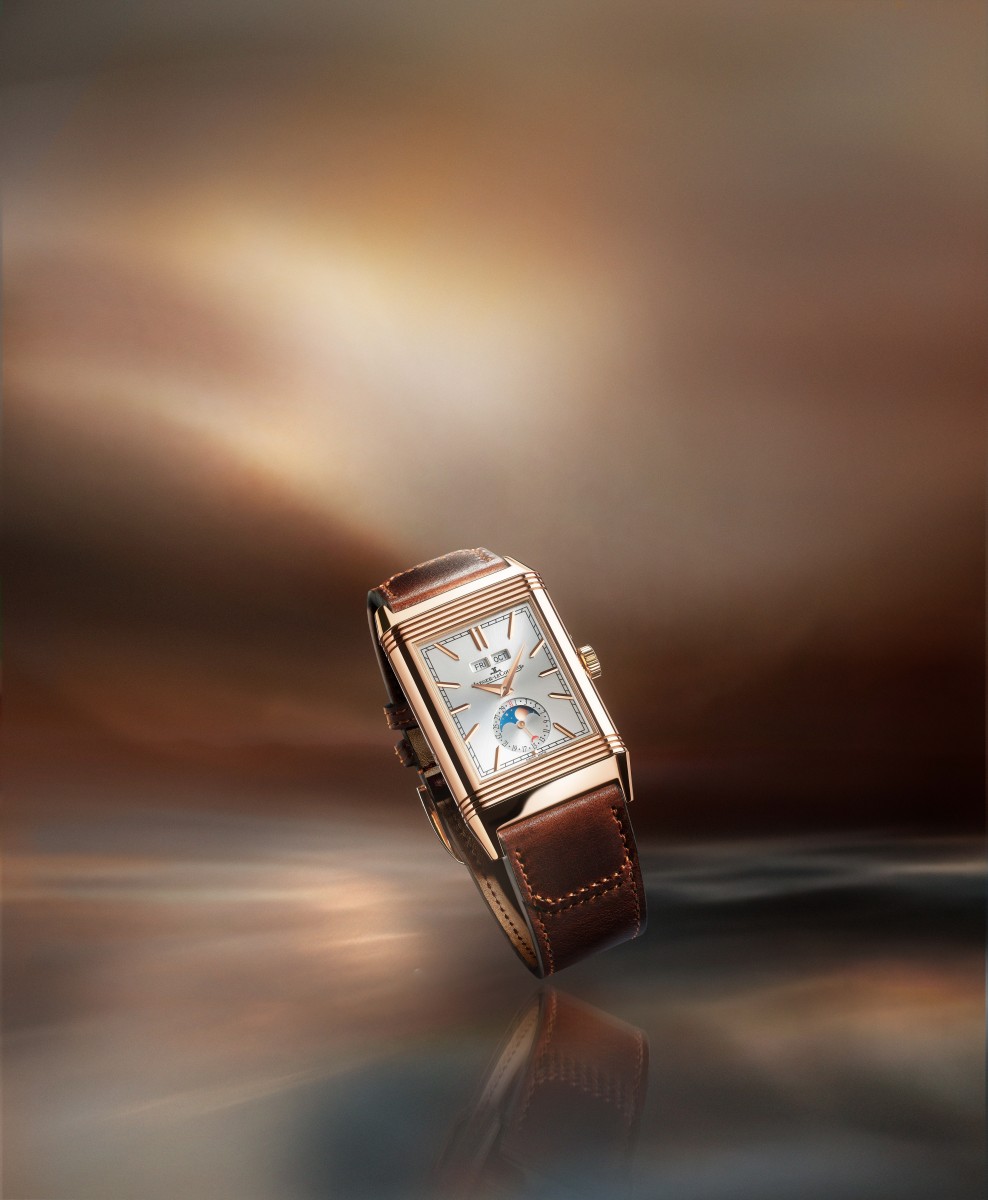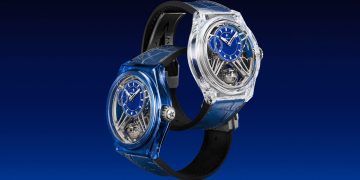Source: Images and content by Jaeger LeCoultre @ Jaeger LeCoultre.

CONTEMPORARY YET TIMELESS
The new Reverso Tribute Duoface Calendar brings a subtle touch of modern elegance to its reinterpretation of two iconic Jaeger-LeCoultre complications — the triple calendar and the Duoface. The latter consists in displaying two time zones on different faces of the Reverso, driven by a single movement calibre — and an oblong calibre — which was introduced in 1994.
The Reverso Tribute Duoface Calendar preserves the legendary spirit of the original 1931 model whilst incorporating the contemporary aesthetic cues of 21st-century watchmaking. Greater depth of detail, refined execution and subtle textures define this latest release, one model in stainless steel and the other in warm-hued pink gold.
In the ateliers of the Manufacture in Le Sentier, where the in-house expertise of Jaeger-LeCoultre is founded on close to two centuries of experience, watchmakers have mastered a panoply of calendar functions. The triple calendar, consisting of day, date and month indications, is an eternal classic that takes prime position on the recto dial of the new Reverso Tribute Duoface Calendar. These indications, based on solar time, are balanced with a moon-phase display at 6 o’clock, uniting two aspects of the universe of celestial time on the same dial.
In the steel model, discretion and understated textures take the lead. Alternating surface finishes, such as polished hands set against a grained dial, ensure that all indications remain readable at a glance, even as the tone-on-tone colour palette imparts ultimate refinement. The radiant warmth of the pink-gold model is further amplified by the delicate lines of a sunrayed dial finish, its silvered tones bringing out the contrasting hue of the hands and hour markers.
The verso dial enjoys a completely refreshed look in both steel and pink-gold models of the Reverso Tribute Duoface Calendar, characterised by a more select number of surface finishing techniques and a greater sense of space. The traditional Clous de Paris guillochage decorating the outer dial segment gives way to a sunrayed finish, originating from the same point as the hour and minute hands. This expansive radial effect is enhanced by the new hour markers, now set along the exterior periphery of the chemin-de-fer minuterie. At the 6 o’clock position, a day-night indication has been set behind the hour-and-minute counter, creating a subtle way of revealing essential information about the second time-zone .








